Greetings from Japan
Tagged:Beauty
/
Food
We finally got to return to Japan to visit the Weekend Editrix’s mother!
Getting Permission to Go to Japan
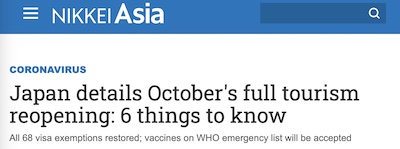 …but it wasn’t easy!
…but it wasn’t easy!
While Japan is now lifting most visa requirements [1], it turns out (of course) that they will be lifted the day after your humble Weekend Editor returns to the US! So, consulate and visa applications it was.
The actual visa application with the Foreign Ministry was more or less straightforward. Though it was a bit stressful: we had to buy tickets before we knew that a visa would be granted to me, placing some money at risk.
I had to upload images of my passport, my vaccination card, my tickets, a letter of invitation from my mother-in-law, documentation of my marriage to a Japanese citizen, and lots of other things.
Still, it worked out: the visa was granted in about a week.
Flights
Getting flights to Japan was a relative nightmare. We wanted to go to Kansai/KIX, the international airport near Osaka. There used to be a number of direct flights, but no more. Either we had to go first to Tokyo (which previously ran the risk of being quarantined in Tokyo for a week), or do something complicated.
“Complicated” in this case also meant long and expensive: a flight from Boston to Honolulu, a night in an airport hotel, and thence to Osaka. The cost was pretty much prohibitive to us, in our retirement income, at about 2.5x what we’ve previously paid. This is why the Weekend Editrix has gone a couple times, but your humble Weekend Editor has had to stay home.
The flight back will be even more brutal: no overnight stay, just an eternity on a plane going way further south than we need to go.
Still, it’s an opportunity to see Mama-san, who is old and frail and trying to survive a pandemic. One should not pass up chances, here.
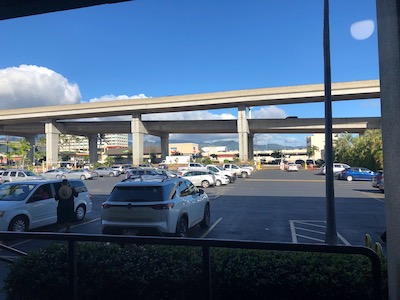 So yes, we “got to” stay in Hawaii. At an airport hotel next to a freeway, whose chief
virtue is proximity to the airport and little else. Not even food: COVID-19 has made a
lot of restaurants shut down, including our charming little overnight place. As you can
see from the picture, this is not why tourists go to Hawaii. (Or at least, not me. I
mean, you can see there’s something beautiful way off yonder near the horizon, but not
near where this picture was taken.)
So yes, we “got to” stay in Hawaii. At an airport hotel next to a freeway, whose chief
virtue is proximity to the airport and little else. Not even food: COVID-19 has made a
lot of restaurants shut down, including our charming little overnight place. As you can
see from the picture, this is not why tourists go to Hawaii. (Or at least, not me. I
mean, you can see there’s something beautiful way off yonder near the horizon, but not
near where this picture was taken.)
A nearby strip mall had a Hawaiian barbecue place: L&L Hawaiian barbecue. I’d always heard about Hawaiian plate lunch and persuaded a skeptical Weekend Editrix to try it by pointing out the Japanese bento influence. There were, of course, frustrations. For example, this particular outpost was staffed by resolutely Chinese employees, all quite skeptical of the utility of English. Should you be so rash as to deviate from quoting the menu, there were looks of frustrated incomprehension. This made it difficult for the Weekend Editrix to get any explanation of just what the menu meant.
It was… interesting. (I think I’ll consult with someone more expert in the genre before repeating it, should the opportunity arise.)
Mine hit the carb note really hard: 2 scoops white rice, 1 scoop macaroni salad, and a stew involving potatoes. Tasty and cheap, but I probably chose suboptimally. Also, a strip mall might not have been the place to test the local food, but we were both too exhausted to go anywhere else.
Arrival Procedures
Normally arrival in Japan is quite smooth a process, and even somewhat routine & perfunctory. Not so nowadays:
- Immigration: I’ve never had such close inspection of my passport before: every single page turned, photo checked, other entry stamps examined closely, and so on. I then had to display the visa, live on my phone from the Foreign Ministry site with a timer counting down, to make sure it was not just an image. Then it was carefully and firmly explained to me that my admission to Japan was good for 15 days only.
- Medical check: There’s this Japanese app called mySOS,
which is normally used for things like calling for medical help. Here, there’s an
aspect of the app called “Fast Track” for presenting pandemic credentials upon entry to
Japan:
- Japanese are told to fill out forms with it for re-entry to the country: passport, photo, vax card, medical status, travel history, and so on. It then shows a screen of various colors to determine how closely you’ll be probed: red basically means “no”, yellow means “you’re going to be tested to a fare-thee-well”, green means “test and quarantine”, and blue means “ok”. For once, “blue screen” was a good thing!
- On the instructions to non-Japanese, I did not see this mentioned anywhere; I had the good fortune to have the Weekend Editrix in her capacity as native guide to point it out to me. Had I not used this, medical checkpoints at the airport would have taken hours. Fortunately, we both got “blue” status and could enter, but only after very close inspection again of passports, vax cards, and phones. The vax card was so closely inspected, I think the guy was looking for changes of ink within a line that might indicate some creative writing. Fortunately, I was on the up-and-up.
- Customs: Fortunately, I’d filled out the customs entry card while still on the plane and had an obviously Japanese spouse in tow. A number of other less fortunate non-Japanese were madly filling out the cards while under extremely careful scrutiny of officials. But when we presented the card with all the other documents, the customs guy apparently decided we were playing on The Correct Team and let us in.
Apparently this all gets better 2022-Oct-11, when the visa requirements get dropped. They’ll still probably insist on vaccination by one of a few of the more effective vaccines, though.
Universal Masking
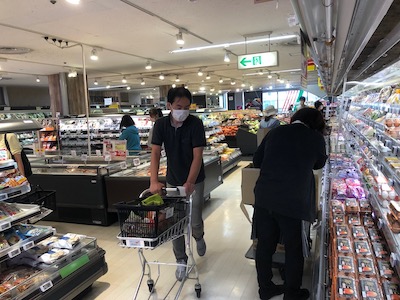 The first thing that struck me was how much masking was downright universal. Indeed,
the US embassy page explained that this was the case, and anyone not masking “would
reflect badly on the foreign community”. Which is apparently diplomatic-speak meaning:
“For the love of Heaven, dudes, mask up already!”
The first thing that struck me was how much masking was downright universal. Indeed,
the US embassy page explained that this was the case, and anyone not masking “would
reflect badly on the foreign community”. Which is apparently diplomatic-speak meaning:
“For the love of Heaven, dudes, mask up already!”
Here’s a picture from a Daiei grocery store. Note the universal use of masks. Note also that this middlebrow grocery resembles a higher-end US grocery; that’s how Japanese roll.
This is why the excess mortality in Japan has been negative for the last few years: they mask up so reliably, even without mandates, that they’ve suppressed both COVID-19 and influenza. We could learn from this example of public health and social responsibility!
Mama-san’s 90th Celebration at an Onsen
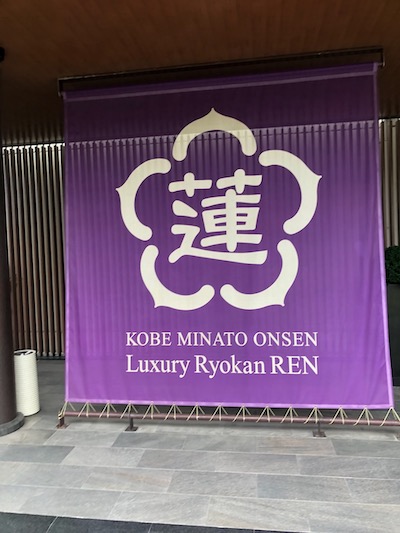
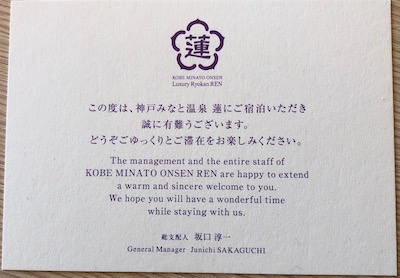 Our next mission was to take Mama-san out for a short stay at an onsen hotel (i.e., a
hotel with hot spring/large baths). They chose a place in nearby Kobe, a short train ride
away. It had onsen and a Japanese buffet dinner and breakfast.
Our next mission was to take Mama-san out for a short stay at an onsen hotel (i.e., a
hotel with hot spring/large baths). They chose a place in nearby Kobe, a short train ride
away. It had onsen and a Japanese buffet dinner and breakfast.
So we adjourned to Kobe, with me as wheelchair pilot negotiating the train stations. Japanese trains are wonderful: if you enter a station with a wheelchair, a station employee immediately materializes at your side with a bridge plate to help the wheelchair roll into the train car, and calls ahead at your destination to tell them which car you’re in so somebody with a bridge plate will be there too. Again, something American mass transit can learn from Japan. (After we fix the problem of having trains catch fire, which was a thing in Boston this summer!)
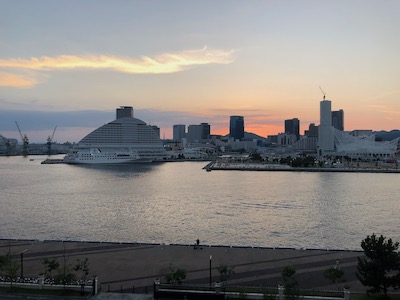
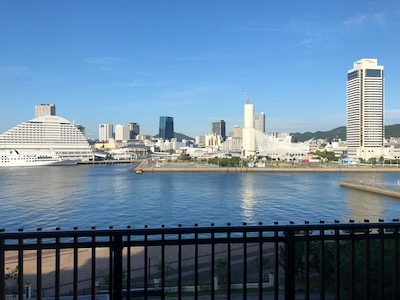
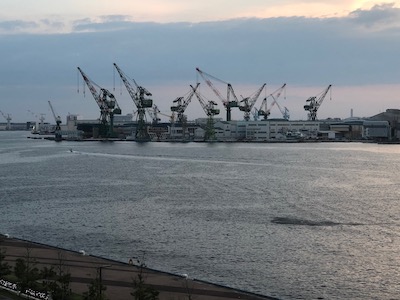 This is right on the Kobe harbor. Here you can see one view with enough cranes to show
it’s still a working harbor. Turn 1/8th of a turn and you see the beautiful buildings,
shown here in daylight and twilight. I like the idea of mixing a working harbor with a
pleasure destination; that’s almost never the case in the US.
This is right on the Kobe harbor. Here you can see one view with enough cranes to show
it’s still a working harbor. Turn 1/8th of a turn and you see the beautiful buildings,
shown here in daylight and twilight. I like the idea of mixing a working harbor with a
pleasure destination; that’s almost never the case in the US.
At night, the round tower at the right has images projected on it as part of an art project. I think it told a story, but I’m not sophisticated enough to know just what the story might have been!
Basically, the onsen hotel was a beautiful place with understated, elegant decor. I was too jet-lagged to use the onsen, but given my appearance that may have been a good thing for the Japanese onsen users.
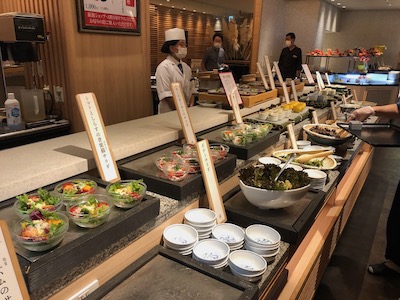 They had a quite impressive buffet (“Viking style” in Japanese). The sanitation
requirements were impressive: wearing hotel slippers, plastic gloves, hand sanitizer,
tongs, and of course masks.
They had a quite impressive buffet (“Viking style” in Japanese). The sanitation
requirements were impressive: wearing hotel slippers, plastic gloves, hand sanitizer,
tongs, and of course masks.
There were a wide variety of dishes, mostly delicious, some quite mysterious. I mostly followed my family around and tried what they liked, both out of curiosity about the food and curiosity about their tastes. I can’t say I understood or appreciated everything; but it was certainly nice, after several years of pandemic isolation, to see the Weekend Editrix’s family and experience some of the world (in a reasonably safe way, unlike in the US).
Some Oddities
Japan being the place it is, there are, of course, oddities. Not that that’s a bad thing: oddities are a creative thing.
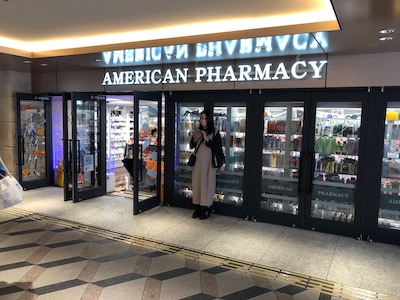 First up: sometimes people put English words on things, not so much descriptively as much as a
fashion statement. For example, the oddly-named “American Pharmacy”, shown here. I have
no idea what makes it American; I didn’t want to be the stereotypical foreigner who walks in
and yucks rudely at things. It’s odd, but it’s the way they want it, so that’s good
enough for me. But still odd.
First up: sometimes people put English words on things, not so much descriptively as much as a
fashion statement. For example, the oddly-named “American Pharmacy”, shown here. I have
no idea what makes it American; I didn’t want to be the stereotypical foreigner who walks in
and yucks rudely at things. It’s odd, but it’s the way they want it, so that’s good
enough for me. But still odd.
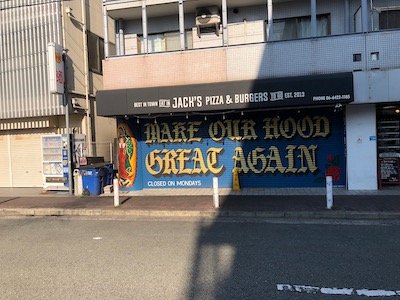 Next in our list: convenient to my in-law’s home is this place, Jack’s Pizza &
Burgers. Nothing too odd
about that; I guess stereotypically American food is an ethnic curiosity. Sort of like
what actual Chinese folk think when they see an American “Chinese” restaurant in the US.
Next in our list: convenient to my in-law’s home is this place, Jack’s Pizza &
Burgers. Nothing too odd
about that; I guess stereotypically American food is an ethnic curiosity. Sort of like
what actual Chinese folk think when they see an American “Chinese” restaurant in the US.
No, what’s odd is only visible when the place is closed: the steel security shutters say, in pseudo-Germanic 𝔉𝔯𝔞𝔨𝔱𝔲𝔯 text, “MAKE OUR HOOD GREAT AGAIN” (definitely “HOOD”, not “FOOD”). And, for no especially obvious reason, an icon of the Virgin of Guadalupe. Honestly, I have no idea what they’re doing. I suspect they don’t know, either.
I’m not sure if I would be more confused or less confused if they did know what they were doing. Sometimes you just have to let the surrealism be what it is.
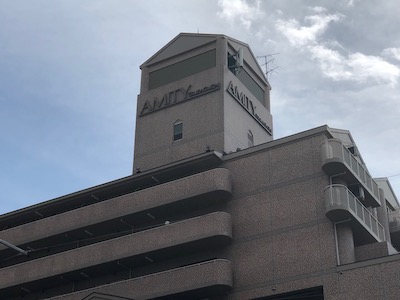 Sometimes names are calculated to appeal to something pleasant. But other times this
backfires, sort of, and just leaves me wondering what’s going on. (To be fair, “wondering
what’s going on” is pretty much my natural state.)
Sometimes names are calculated to appeal to something pleasant. But other times this
backfires, sort of, and just leaves me wondering what’s going on. (To be fair, “wondering
what’s going on” is pretty much my natural state.)
And so it is here, with an apartment building named “Amity”. I mean, I’m all for amity as the next guy. Who doesn’t like the idea of people getting along, being friendly, helping each other out? And hey, I read Divergent along with everybody else. (Didn’t love it, though.)
But this building precedes that novel, and so… what’s happening here?
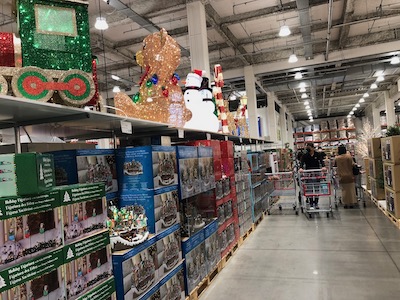 Finally, we went to a reasonably local Costco in Japan. (I
don’t quite understand why we went there, but we did. Sometimes my job is to bow,
smile, and carry stuff. I can do that; understanding the rest is often beyond me.
Sometimes it’s beyond me even in my own culture!)
Finally, we went to a reasonably local Costco in Japan. (I
don’t quite understand why we went there, but we did. Sometimes my job is to bow,
smile, and carry stuff. I can do that; understanding the rest is often beyond me.
Sometimes it’s beyond me even in my own culture!)
It’s… disorienting. On the one hand, it looks almost exactly like an American Costco: huge quantities of everything, such as toilet paper in packages capable of filling half of a smallish Japanese apartment. It’s weird to see all those English brand names on boxes in Japan. Of course, there are some Japanese items; we got some sushi to take home for lunch that was surprisingly… pretty ok.
But I don’t understand why the Christmas decorations at Costco come out in September. And, as shown here, the same thing happens in Japan. In a country not especially noted for its celebration of Christmas, except as a party occasion before the serious holidays around New Year’s Day.
Honestly, this one is pretty much a tie: about equal parts American oddity and Japanese oddity. I sort of liked the mix, after getting used to it.
Still, some oddities can be quite beautiful, if you’re willing to look closely. This is an archway over a simple covered walkway at the train station near my mother-in-law’s house. Look at the glass in the archway: clearly some member of my tribe was involved, because those curves are produced by conformal mapping the complex plane!
It looks to be the Schwarz-Christoffel map, at least at cursory inspection. The part where it maps a strip to the upper half-plane, and then the strip gets curved. The only way for it to be cooler would be for the covering to be wing-shaped and the window partitions to follow a Joukowski transform. Yes that’s too much to ask of a simple train station, but can I hope to see it at the airport?
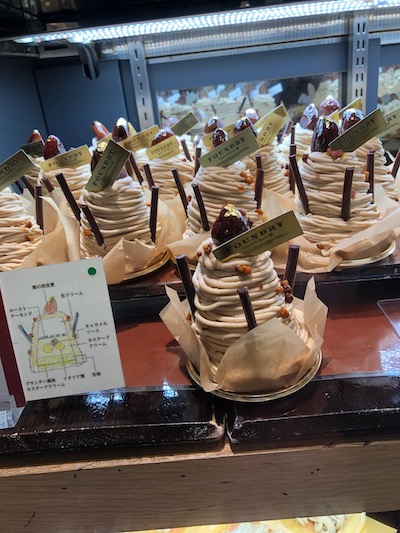 After a short train ride, we ended up at the
Hankyu Depato in Umeda Station in
Osaka. The basement is a collection of truly amazing food stores, ranging from a bento
lunch to various gourmet items. (Sit-in dining is on the top floors.) Shown here is a
pastry vendor whose mad pâtissières have created a
mont blanc nearly the size of the actual
Mont Blanc. Beneath the huge chestnut creme
exterior is an interior filled with creme, and some various layers of light sponge cake
(as shown in the diagram). Not many bakeries are so careful they show you a
cross-sectional diagram of the interior of a pastry!
After a short train ride, we ended up at the
Hankyu Depato in Umeda Station in
Osaka. The basement is a collection of truly amazing food stores, ranging from a bento
lunch to various gourmet items. (Sit-in dining is on the top floors.) Shown here is a
pastry vendor whose mad pâtissières have created a
mont blanc nearly the size of the actual
Mont Blanc. Beneath the huge chestnut creme
exterior is an interior filled with creme, and some various layers of light sponge cake
(as shown in the diagram). Not many bakeries are so careful they show you a
cross-sectional diagram of the interior of a pastry!
As a fan of pastry in general but specifically of icings, frostings, and cream, I approve. Firmly. Well done. (Except it wasn’t cheap, at around $8 per pastry. Not super expensive either, though, given the dollar/yen exchange rate right now favors dollars.)
Then again, a repeated experience an American will have in Japan is the sudden recognition of something looking weird – the indicator that you’re out of your cultural depth and need to ask somebody what’s going on.
Case in point: while waiting for a bus to the airport at a JR station, the men’s restroom had the sign shown above next to the toilet: “Always thank the spirit of toilets.” What? I notice that I am confused!
So I had no recourse but to ask the Weekend Editrix what in the world this meant. In some forms of Shintō the view of the world is animistic: there is an aspect of G-d in everything. Anciently, this meant literally many, many deities; among those who think about Shintō seriously today (a small minority?) it means finding the image of the divine everywhere. I can certainly understand and sympathize with the latter: it’s important to seek out feelings of the divine, and how humanity can be perfected.
But toilets? Well, see… if you don’t make a mess, and clean your toilet regularly, you’ll have better hygiene, better health, and a better life. This is what a benevolent deity would want for you, and what you should want for yourself.
Just to put a fine point on the cultural dissonance, there was a popular song about this in 2011: “Toire no kami-sama” (the god/goddess of the toilet). The link shows the YouTube video above, as well as the lyrics and some explanation in English. Yes, it’s (sort of) about cleaning toilets; but it’s really about the love of family and the duty to care for each other.
In the West, we’d have a sign saying roughly: “Hey, Rube – Don’t Make a Mess!” But in Japan, they respect the divine nature of each other by serving each other with cleanliness.
Doesn’t sound so stupid now, does it?
I mean, “weird”? Sure. But not stupid. Hence the point of not rejecting “weird” differences, but trying to understand them instead.
The Trip Home
32 hours travel time door-to-door. Really don’t want to repeat that. I hope there will be more direct flights when COVID-19 is over.
Notes & References
1: K Iwamoto & S Take, “Japan details October’s full tourism reopening: 6 things to know”, NIKKEI Asia, 2022-Sep-26. ↩

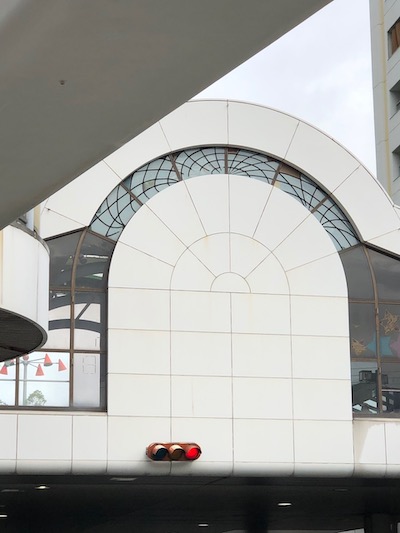
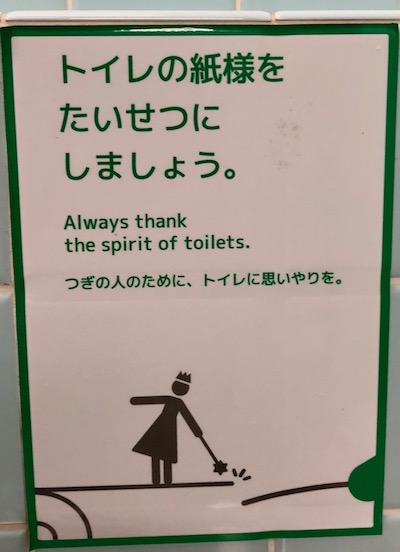
Gestae Commentaria
Comments for this post are closed pending repair of the comment system, but the Email/Twitter/Mastodon icons at page-top always work.